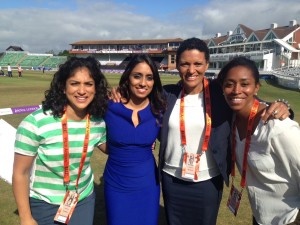Ashes Wrap
“It’s supposed to be hard. If it was easy everyone would do it. The hard is what makes it great.” Jimmy Duggan to Dotti Henricks in one of my favorite movies. An empathy to the uniform issues is maybe one of the reasons as when flashbacks to when we went culottes to pants was one of the greatest days of my life. That, as well as the story of women’s sport making a mark, is always going to be winner in my books.
Let’s not go into who in the Ashes series is the closest to Dotti Hendricks but this series reminded me a lot of this movie. Keep in the back of your mind how a sporting concept turned into a great product due to players’ talent and support from administrators. Sounds so simple.
The Series:
Let’s start with the cricket and I’m going to brag to start with. I picked that the Aussies would win back the Ashes this English summer. Not a lay down misère and not based on bias. One I came to on the Southern Stars dominance in the shorter formats as World Champions in 50 over and T20 formats and a few more X factor players when it comes to the crunch. The mix of a dominant test win and series loss in the T20s was not a forecast I entertained for too long back in late July.
I may have my media hat on here but the multi format point system gave us what it intended. A series that ebbed and flowed and kept us guessing… almost to the end.
England were only 2 points behind Australia at the end of the one day series after winning the first game in Taunton and then losing the next two games in Bristol and Worcester. A potential Australian win in the test created some added pressure and hype leading into the test. England didn’t handle it well and a resulting demoralizing loss had their backs well against the wall. A simple equation of having to win all 3 T20s to retain the Ashes was the bottom line.
A gutsy and skillful win by England at “The Fortress” in Chelmsford gave them a sniff. Another brilliant bowling display by Anya Shrubsole in the first innings at Hove gave them a massive opportunity to take the series into the deciding game. A broadcasters dream!
And then a capitulation with the bat worthy of Greg Norman in the 96 Masters, Jana Novotna in the 93 Wimbledon final or the South African men’s cricket team in any cricket World Cup semi final followed. The Ashes were Australia’s and, the dead rubber aside, the series was by and large an Australian series.
However, anyone following the series would know all of this. So a few thoughts and musings from behind the scenes which hopefully give further insight into this series.
HOW DARE YOU!
Let’s start with the most divisive one first. A topic that when mentioned, ruffled feathers and agitated quite a lot of supporters and players. Some say it was patronizing and uncalled for from someone who doesn’t know the game. The call to shorten the pitch.
Now let me give you a moment to gather your thoughts on this one before going on. Get your initial reaction under control if it does indeed rile you up and then listen to the ‘why’ behind the comment made on air by Paul Allott.
Allott, a former England fast bowler, Sky Sports commentator and genuine sports fan has commentated on women’s cricket since Sky Sports started broadcasting it over 15 years ago. That’s a lot of international cricket watched and possibly/probably more international games intensely watched than what most followers of the game have ever done.
I’ll defend him to the hilt to anyone who says his comments are patronizing. His suggestion, one that the ICC have been discussing and will continue to do so, wasn’t a flippant comment to downgrade the women’s game or cause a stir purely for the sake of it.
It is an idea he has been thinking about for while on the back of appreciating the already skillful and entertaining game and wanting to discuss how we can make even more attractive to new viewers of the game. He also acknowledges that the women’s game has a canvass that isn’t as full of entrenched ideologies like the men’s game and this opportunity should be explored. An exciting place to be to allow for possibilities to create and develop a best fit cricket landscape for players and viewers alike.
Paul is the first to say as a lover of cricket that he appreciates and enjoys watching, sometimes more so than men’s cricket, the likes of Lanning, Brunt, Perry and Taylor go about their business. He’s a convert. And as such he’s wanting to support it and look at ways to improve the game to dazzle old and new viewers, and challenge and reward players – just like he does for the men’s game.
So if we remove our natural defensive mindset of not wanting our sport to be “looked down upon” and think of any suggestion being made by those in and around the game as their way of wanting to keep the momentum building, we might just find ourselves in a more exciting place?
I think the women’s game, as it is for women’s sport, often has opportunities unlike men’s sport to make bolder statements and changes that can enhance the spectacle and possibly open others’ eyes to the idea that change can be a good thing if suggestions are thought through and done for all the right reasons.
The jury is still out for me on shortening the pitch, making the ball smaller and other ideas, but I’m certainly open to the debate.
MEDIA:
Take a bow Sky Sports. The ECB first told Sky Sports as part of their cricket broadcast deal in the mid/late 1990s they ‘had’ to televise at least one women’s game a summer. Which brought about my only claim to fame as being the first female cricketer given out by the TV third umpire in England. And proudly no one can take that away from me. :/
Fast forward 20 years and Sky Sports say to the ECB we can’t televise all the T20s and One Day international as part of the Ashes and not the Test, it just wouldn’t be right. And so we had a summer of cricket on television in England as well and offering it to the rest of the world to watch – well done New Zealand for showing it all!
Add to this the BBC’s Test Match Special coverage of all games on Test Match Special radio, the Independent newspaper in particular providing back page and feature pieces and you have a complete series media package.
 Furthermore add a female crew of journalists, commentators, directors and so many more media employees who are paving the way for other women to follow. Bristol had the first all female pre-game TV presentation with Isa Guha, Clare Connor and Lisa Sthalekar. Ali Mitchell, Ebony Rainford-Brent & Melinda Farrell rocked our airwaves on TMS. Izzy Westbury provide some great insight into the series through articles in The Independent and Raf Nicholson, as always, was keeping us up to speed and on our toes through CRICKETher.
Furthermore add a female crew of journalists, commentators, directors and so many more media employees who are paving the way for other women to follow. Bristol had the first all female pre-game TV presentation with Isa Guha, Clare Connor and Lisa Sthalekar. Ali Mitchell, Ebony Rainford-Brent & Melinda Farrell rocked our airwaves on TMS. Izzy Westbury provide some great insight into the series through articles in The Independent and Raf Nicholson, as always, was keeping us up to speed and on our toes through CRICKETher.
It’s not all about the chicks though! It really was a great team effort and the input, banter and support from the likes of Paul Allott, Nick Knight, Mark Butcher, Charles Dagnall, Brian Henderson, Ian Ward and a load of others really made it a standout tour.
To say there has been a momentum swing in the media, in the UK at least, is an understatement.
“SHOW ME THE MONEY”
Times have certainly changed within the last 10 years of women’s cricket. Amateur to semi-professional and in some cases semi-professional to professional which equates to my playing days and all those before on the amateur front, to the current Australian Southern Stars on the semi-professional and the England squad on the professional front.
A lot of women’s sports at an international level are flirting at the edges of the transition from one to the other. The Australian soccer team, the Matilda’s, (Background on the Matilda’s pay dispute,) the most public example of this in their recent USA tour cancellation to fight for a better Collective Bargaining Agreement with Football Federation of Australia.
If any sport wants to make the transition between the different levels they might want to take note of how the two powerhouses of women’s cricket administration have gone about the introduction of centralised contracts and the impact it can have both on and off the field.
Let’s lead off with the place we want women’s elite sports to get to. So, hats off to the ECB on this front as a leader in the cricket world to provide full contracts and to show it’s not only possible and sustainable but it’s fundamentally the right thing to do on so many levels.
The financial backing of the program and players shifted England’s standing from unknown players vying off for semi final placings to recognizable names in UK sport and consistent finals’ spots.
 With this new found ‘celebrity’ status comes a whole different world of scrutiny, judgment and accountability that takes some time to get used to. This time given will depend a lot on the level of on field performances and so for the England side, this Ashes, the scrutiny came thick and fast.
With this new found ‘celebrity’ status comes a whole different world of scrutiny, judgment and accountability that takes some time to get used to. This time given will depend a lot on the level of on field performances and so for the England side, this Ashes, the scrutiny came thick and fast.
The most frequent question that was being asked was why are we paying these players a full time contract if they are performing at a standard that can’t retain the Ashes?
Whatever your reply, the bottom line is that with the monetary changes in these players lives there comes a need to make them aware of the good the bad and the ugly that comes with this change.
The other question administrators may ask is where could the pool of money be better spent? Do you get to where you want to go by going straight up and making all contracted players fully professional? Or do you use the same amount of money (note this is not necessarily the case between Australia and England) and split it across the national and domestic player pool to provide for both those at the top, those wanting to get there and those providing the best competition for them both?
Taking into account all of the above this Ashes series has been the most defining series I have been involved in for the game. I can remember commentating on my first few women’s internationals where I spent a lot of time trying so hard to turn negative performances into positive ones or finding excuses to cover for moments that the male commentators would cane. This series though I was at times critical of both sides and not once did I try or wanted to find an excuse.
Unlike the All American Girls Baseball League which only lasted 11 years, our game has been around since 1745 (first recorded game), that’s 270 years of development. Maybe Hollywood might see the worth in a movie about women’s cricket?
Movie or no movie, I have a feeling that the elements on show in this series – not limited to media, contracts and open discussion – are what could take the game to new levels and will keep the momentum around women’s cricket and sport growing for the betterment of our own game as well as other sports.
